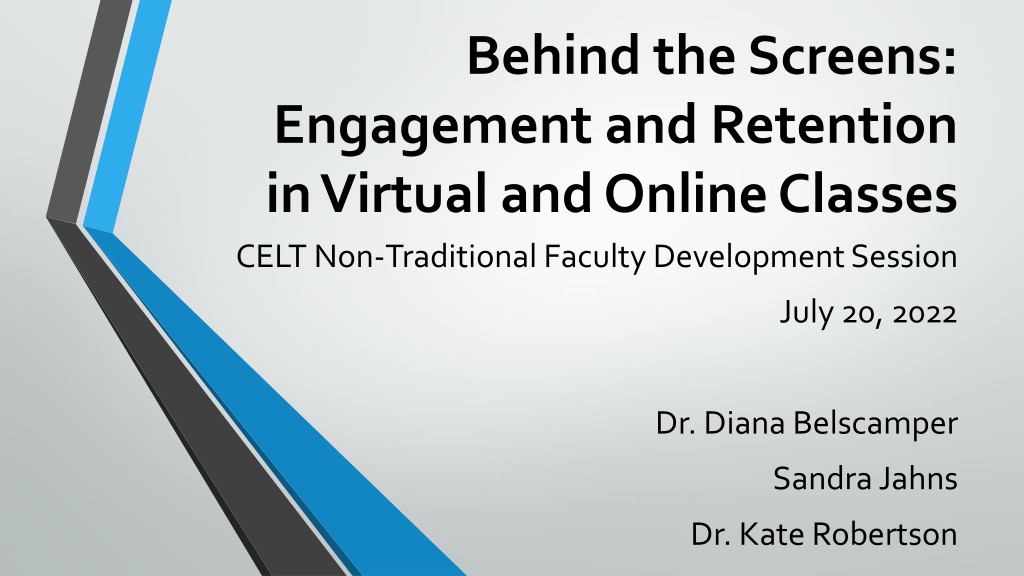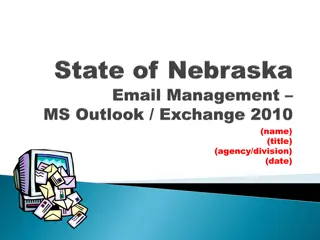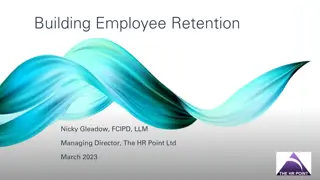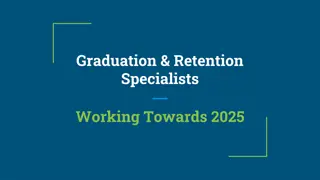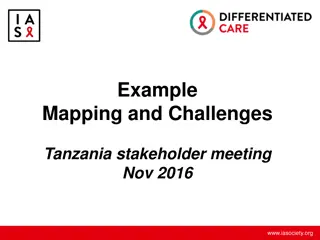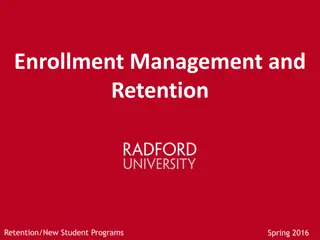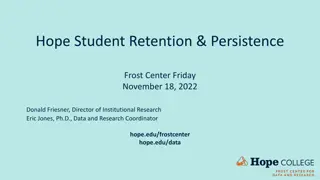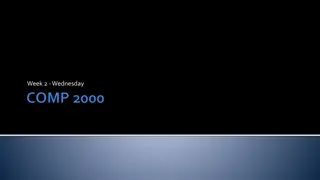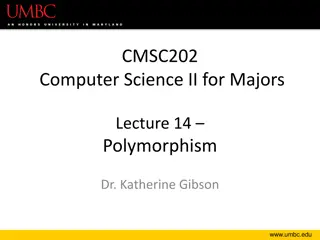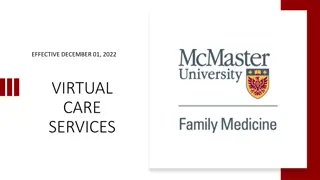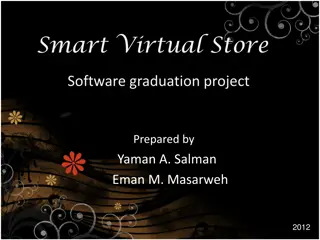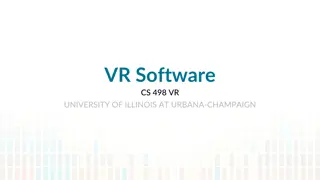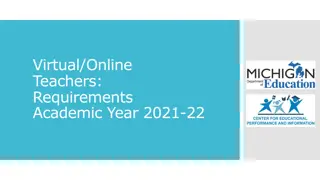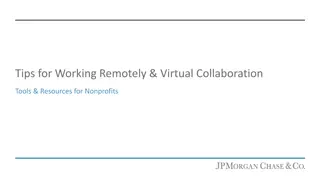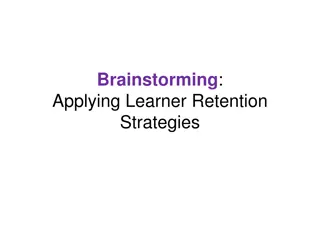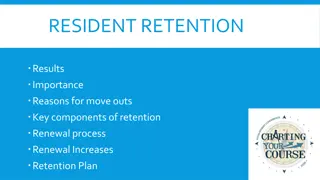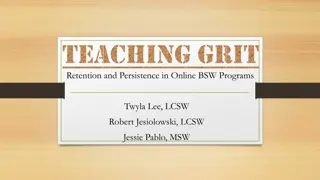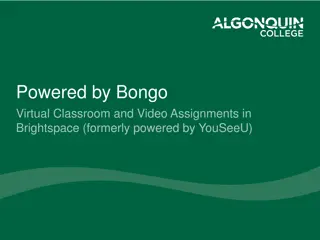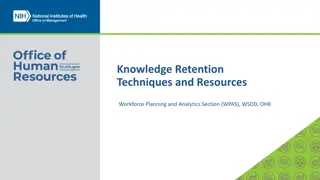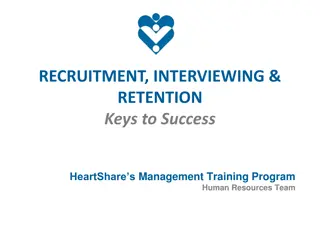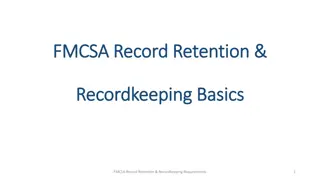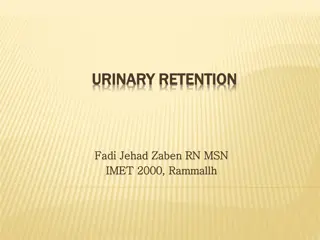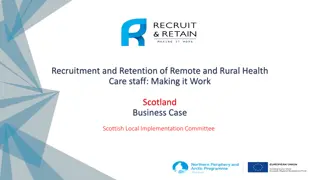Enhancing Engagement and Retention in Virtual Classes: Best Practices
This resource delves into strategies for enhancing engagement and retention in virtual and online classes. Featuring insights from Dr. Diana Belscamper, Sandra Jahns, and Dr. Kate Robertson, the session covers topics such as the Community of Inquiry model, the IRE discussion method, adapting face-to-face strategies to distance learning, engaging individual students, and fostering student camaraderie. Practical tips and interactive discussions aim to provide educators with tools to create a more engaging virtual classroom environment.
Download Presentation

Please find below an Image/Link to download the presentation.
The content on the website is provided AS IS for your information and personal use only. It may not be sold, licensed, or shared on other websites without obtaining consent from the author. Download presentation by click this link. If you encounter any issues during the download, it is possible that the publisher has removed the file from their server.
E N D
Presentation Transcript
Behind the Screens: Engagement and Retention in Virtual and Online Classes CELT Non-Traditional Faculty Development Session July 20, 2022 Dr. Diana Belscamper Sandra Jahns Dr. Kate Robertson
Love one another earnestly from a pure heart, since you have been born again, not of perishable seed but of imperishable, through the living and abiding word of God. 1 Peter 1:22-23 2
Engagement! Main Model: Community of Inquiry model (from Distracted, Lang, 2020) Student to student, student to instructor, student to content/material Discussion Model: IRE method (from Engaged Teaching, Barkley and Major, 2022) Initiation, Response, Evaluation
Welcome and Agenda Poll: virtual, online, or both Diana Belscamper Best practices for Engagement - Kate Robertson Best practices: Adapting F2F Strategies to Distance Learning Diana Belscamper Engagement Opportunities with Discussion Boards Breakout conversations with colleagues Practical Ways to Engage with Feedback Sandra Jahns Wrap Up - Questions/comments Diana Belscamper
Best Practices for Engagement Dr. Kate Robinson Conversation with Kate Robertson - Best Practices for Engagement
Adapting Face-to-Face Strategies to Distance Learning Dr. Diana Belscamper In the CHAT: How do you engage with individual students in your classes (as opposed to the entire roster of students simultaneously)?
Engaging over Distance How can we adapt practices from face-to-face classrooms in our virtual and online classes? Introductions Agenda for the week Small group discussions General get to know you conversations Student camaraderie BREAKOUT: What is the best way to disengage students? What are their biggest tune-outs or turn-offs? What is the flip side of each of those? How can we ENHANCE engagement with students?
Engaging in Discussion Boards Initiation Initiation: effective and engaging discussion board prompts/questions, setting expectations Open-ended questions to encourage critical thinking and dialogue Explain/reiterate in detail what the expectations are for content of initial posts: length, format, citing course material, deadline for submission Indicate the priorities in assessing/grading are you using a rubric? Establish guidelines of netiquette for professional/civil discourse
Engaging in Discussion Boards Response Response: Students opportunity to integrate their own ideas and opinions with their classmates , as well as with the course content Explain expectations for content of responses to classmates: reflecting and adding to thoughts, asking probing questions, connecting to course content, personal evaluation or opinion Respond to posts yourself! NOTE: This is required - this time is part of the calculation of student instructor time per HLC. Engage in dialogue with the students, as you would in a classroom discussion not necessarily responding to each comment, but clarifying confusing points or answering questions as they arise Redirect conversations if students move off-topic
Engaging in Discussion Boards Evaluation Evaluation: Be active when the students are, so they will see your follow-up Ask reflective questions: Do you think that would the appropriate action every time, or are there situations where your response might be different? Direct to classmates posts: Did you see that Nancy used a similar example? ; David mentioned another source that you might find useful If students ask questions in their posts, feel free to answer them points of clarification, or provide additional sources (maybe a link to a helpful article or video) If you do post additional content in a response, be sure to post that as a general Announcement as well (with some contextual explanation) in case students didn t see that particular post Be inclusive try to respond to every student s posts at least once every few weeks
Easy & Practical Ways to Improve Engagement Sandra Jahns Examples of Suggested Feedback and Grading with Rubrics
Wrap Up Questions and Comments Dr. Diana Belscamper Feedback topics for upcoming sessions? What areas of teaching and learning would you like more support with? What could help you be a more effective representative of the Concordia community for your students? Are you interested in presenting to your colleagues?
Resources Distracted: Why Students Can't Focus and What You Can Do About It James M. Lang, 2020 Engaged Teaching: A Handbook for College Faculty Elizabeth F. Barkley and Claire Howell Major, 2022 Hitting Pause: 65 Lecture Breaks to Refresh and Reinforce Learning Gail Taylor Rice, 2017 Contacts Dr. Diana Belscamper, Distance Teaching and Learning Specialist, CELT Diana.Belscamper@cuw.edu 262.243.1802 Sandra Jahns, Communication Faculty and Assistant to Dean of A&S Sandra.Jahns@cuw.edu Dr. Kate Robertson, Instructional Development Specialist, CELT Catherine.Robertson@cuw.edu 262.243.2082 CELT Blog https://celt.cuw.edu/
